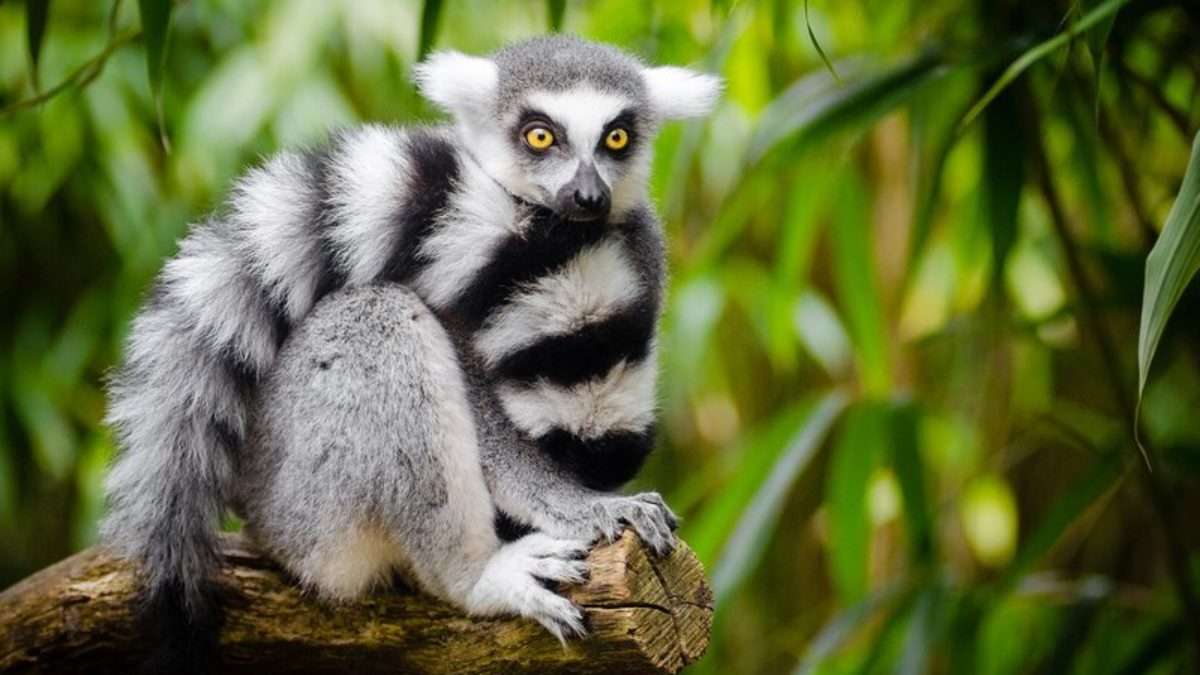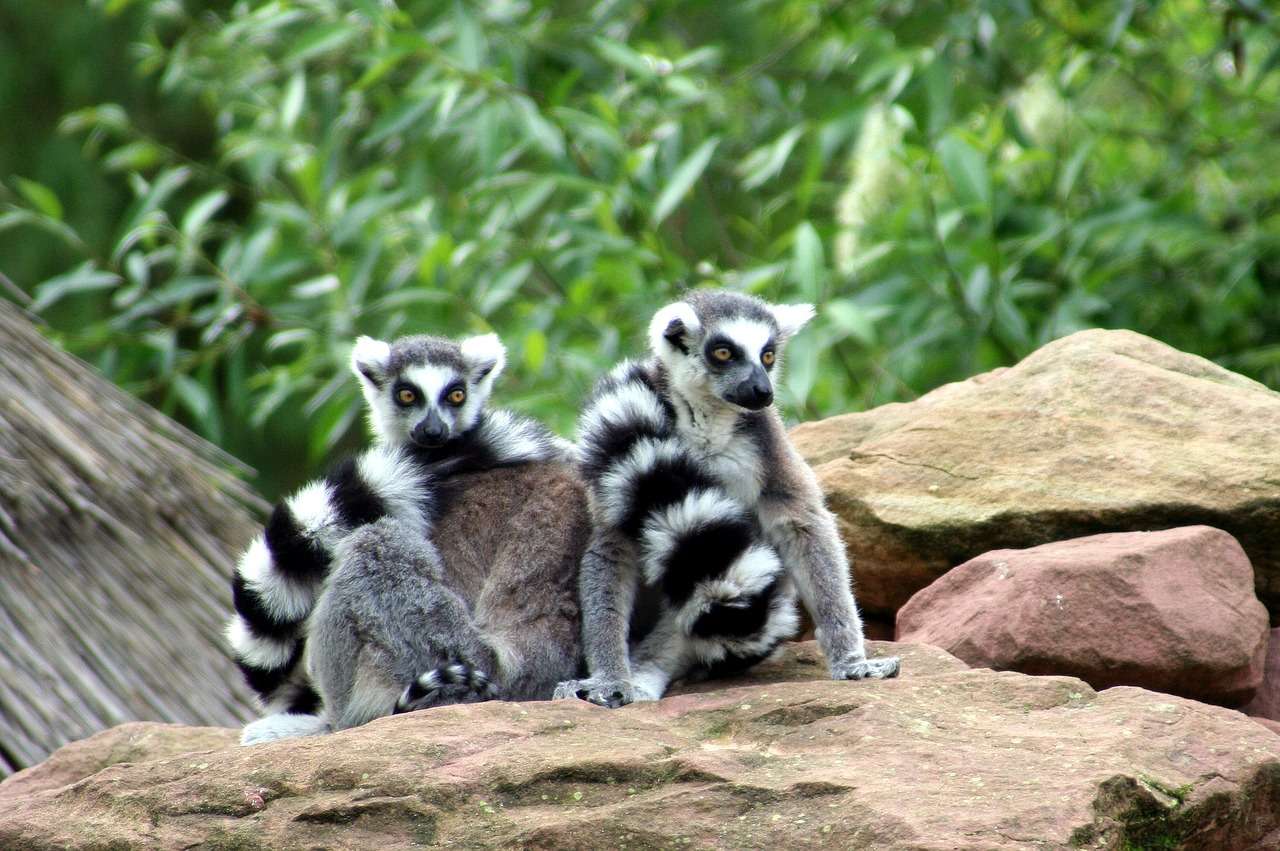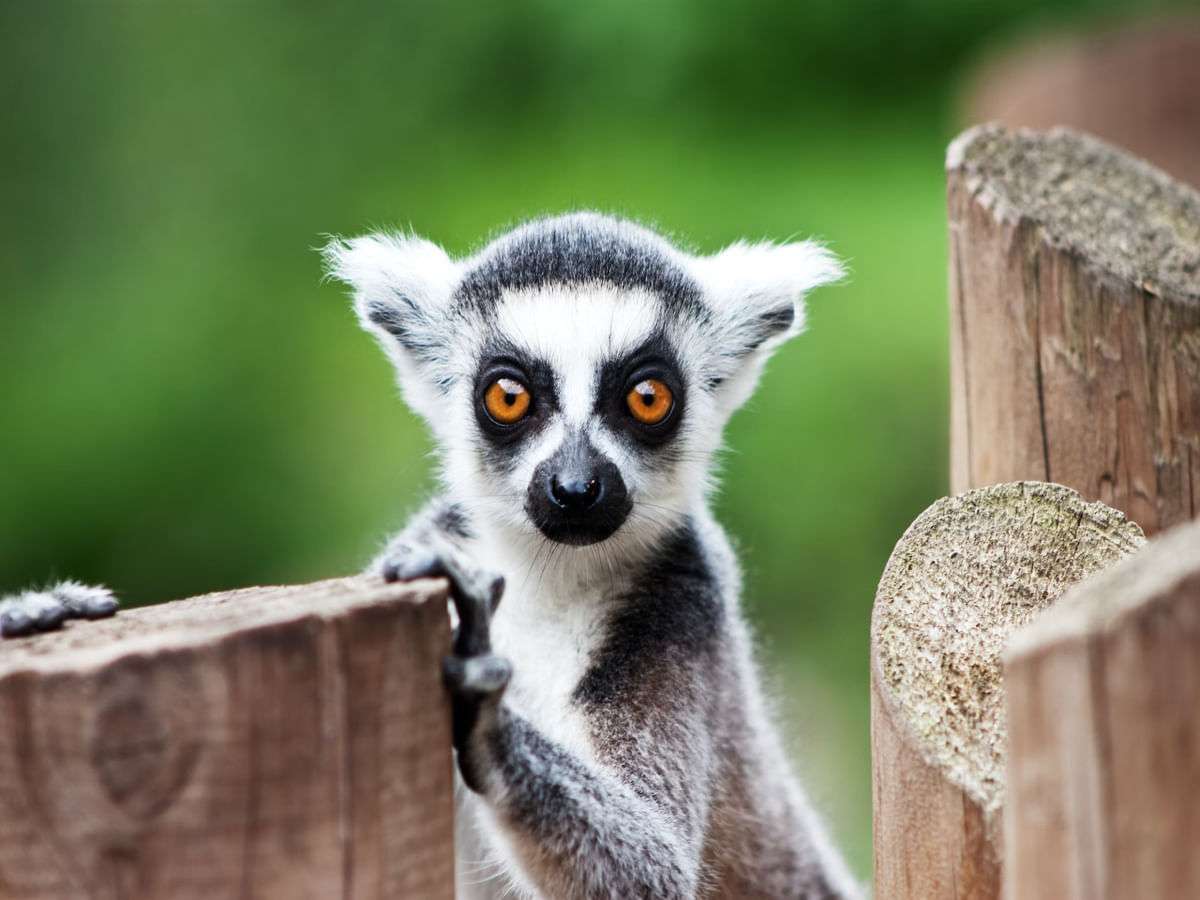World Lemur Day 2022: World Lemur Day is commemorated on the last Friday of October, aiming to raise awareness about the remarkable animals that require our protection. This celebration is closely aligned with the World Lemur Festival, which spans the days and weeks surrounding the holiday.
Lemurs, classified under the superfamily Lemuroidae, are primates with approximately 100 extant species exclusive to the island of Madagascar, located approximately 250 miles off the East African coast. Despite their resemblance to other primates, lemurs evolved independently from apes and monkeys.
The International Union for Conservation of Nature (IUCN) categorizes the majority of lemur species as threatened. As of 2005, a mere 8% of all lemur species were deemed least concern, while the remaining were labeled as critically endangered (16%), endangered (23%), vulnerable (25%), or data deficient (28%).
The primary threat faced by lemur populations is habitat destruction and degradation, driven by activities such as slash-and-burn agriculture, legal and illegal wood gathering, illegal logging, and commercial mining. Additional challenges include climate change, natural disasters, hunting, and the live capture for the exotic pet trade.
Encouragingly, the Malagasy government and conservation organizations have implemented measures to safeguard lemurs. In 1927, the government of Madagascar declared all lemurs protected, establishing a network of protected areas, including national parks, strict nature reserves, and special reserves. Lemurs serve as Madagascar’s flagship species, drawing attention to the country’s biodiverse fauna. Their presence in protected areas contributes to the development of ecotourism, creating job opportunities, and generating revenue through park entrance fees to support local communities.

History of World Lemur Day
Lemurs, classified under the suborder ‘Strepsirrhini,’ are primates that have undergone evolution on the island of Madagascar for approximately 40 million years. This evolutionary process is believed to have occurred during the ‘Eocene’ period or even earlier. According to DNA-based evidence, lemurs are estimated to have arrived on Madagascar between 40 to 52 million years ago. However, human migrations to the island around 2,000 years ago have resulted in lemurs being confined to approximately 10% of the land.
The naming of lemurs dates back to 1758 when Carl Linnaeus, the founder of modern binomial nomenclature, bestowed this name upon them. The term “lemurs” is derived from the Latin word ‘lemures,’ which translates to ‘specters’ or ‘ghosts.’ In Malagasy culture, there is a belief that lemurs possess souls capable of seeking revenge if mistreated. This cultural belief has led to a sense of taboo, known as ‘fady,’ surrounding these mammals. In Western popular culture, lemurs have become characters in children’s films such as “Dinosaurs” and “Madagascar.”
Presently, numerous lemur species face critical endangerment, primarily due to environmental issues, hunting, climate change, and the exotic pet trade. Habitat destruction and degradation are major contributors to their diminishing resources for survival. World Lemur Day, inaugurated in 2014 by Jonah Ratsimmbazafy in Antananarivo, Madagascar, is now celebrated globally by zoos and animal rights organizations. This day coincides with the World Lemur Festival in Madagascar, aiming to raise awareness about the challenges faced by lemur species.
How to Celebrate World Lemur Day
Immerse yourself in the unique realm of the animal kingdom by actively participating in World Lemur Day. Explore the following engaging activities to connect with this special occasion:
Visit Madagascar:
Journey to the island country off the coast of southern Africa, the native habitat of lemurs. This immersive experience allows you to engage directly with World Lemur Day and participate in the renowned World Lemur Festival. Take advantage of your visit to appreciate the local wildlife and express gratitude for the environment that serves as the lemurs’ home.
Participate in the World Lemur Festival:
Even if a trip to Madagascar isn’t feasible, you can still be part of the festivities by tuning in to the World Lemur Festival online. Explore YouTube videos to gain access to previous celebrations, allowing you to virtually connect with the events and festivities of the day.
Whether on-site in Madagascar or through online platforms, these activities offer meaningful ways to enjoy and express appreciation for lemurs and their natural habitat on World Lemur Day.
Why World Lemur Day is Important
Awareness and Education:
World Lemur Day serves as a valuable opportunity to delve into the intricacies of these unique creatures, fostering awareness about the critical need to safeguard their habitat in Madagascar. By engaging with documentaries, online resources, and educational activities, we can collectively become advocates for lemur conservation, understanding the importance of preserving their environment.
B) Supporting Conservation Efforts:
Participating in World Lemur Day presents a chance to contribute to the dedicated organizations working tirelessly to protect lemurs and their habitats. Activities such as making donations, raising awareness, and joining local zoo programs all play a vital role in supporting these essential conservation initiatives, ensuring the continued well-being of lemurs.
C) Embracing Art and Creativity:
World Lemur Day provides a creative platform for artists of various forms to pay homage to these captivating creatures. Whether expressing through sketching, painting, or digital design, celebrating lemurs through art not only spreads awareness but also nurtures a profound appreciation for our furry companions. This artistic expression adds a vibrant dimension to the conservation efforts, highlighting the beauty and uniqueness of lemurs in the creative realm.
World Lemur Day Timeline
1863
Lemur Scientific Classification:
English zoologist John Edward Gray introduced the term ‘Lemur’ to categorize this distinctive group of primates.
1951
Lemur Conservation Start:
The Madagascar Fauna Group was established in 1951, marking the inception of the first collaborative initiative aimed at preserving lemurs and their habitat in Madagascar.
1980s
Awareness Grows:
International awareness for lemur conservation experiences growth, propelled by various non-profit organizations, documentary films, and academic research delving into lemur biology and behavior.
1990
First Lemur Center:
In 1990, the Duke Lemur Center opened in Durham, North Carolina, establishing a facility that housed the world’s largest collection of lemurs outside of Madagascar.
2014
World Lemur Day Inception:
The inaugural celebration of World Lemur Day took place in 2014, dedicated to raising awareness for lemur conservation and honoring these unique creatures.
2018
Threats Increase:
By 2018, a concerning 95% of lemur species were classified as threatened, underscoring the ongoing significance of conservation efforts to safeguard these remarkable primates.
How To Observe World Lemur Day
Donate:
On World Lemur Day, consider contributing to the conservation of lemurs by making a donation. Your support can aid in preserving their populations and habitats. Every contribution, regardless of size, is valued and can make a positive impact on the well-being of these unique creatures.
Learn about lemurs:
Delve into the fascinating world of lemurs and use World Lemur Day as an opportunity to expand your knowledge about these extraordinary creatures. Discover their behaviors, habitats, and the challenges they face. A deeper understanding can fuel your passion for lemur conservation.
Talk about it on social media:
Spread awareness by sharing your newfound knowledge about lemurs on social media platforms. Use your voice to highlight the importance of lemur conservation and encourage others to join in the efforts. Sharing information can inspire collective action and contribute to a wider understanding of the significance of protecting these captivating animals.

Who created lemur Day?
The holiday was first observed in 2014, when it was founded by Jonah Ratsimmbazafy in Antananarivo, Madagascar. Since then zoos and animal rights organizations across the globe have been celebrating this particular event. World Lemur Day is celebrated in tandem with the World Lemur Festival.
Professor Jonah Ratsimbazafy initiated the World Lemur Festival in Antananarivo, Madagascar, aiming to spotlight the significance of lemurs on the island nation. The following year saw global participation from zoos, organizations, and individuals, transforming the event into an annual celebration known as World Lemur Day.
This day aligns with the annual World Lemur Festival, creating a unified global effort to raise awareness about the conservation needs of lemurs and their crucial role in Madagascar’s biodiversity. World Lemur Day has become a focal point for education, outreach, and advocacy, emphasizing the importance of preserving these unique primates and their habitats.
The collaborative spirit of this day continues to foster international cooperation in the ongoing mission to ensure the survival and thriving future of lemurs in their natural environment.
Why are lemurs special?
Lemurs are the most threatened group of mammals on earth, yet they provide priceless ecosystem services. From an ecological perspective, they help maintain Madagascar’s forests and many plant species rely on lemurs for survival. A lot of lemur species love eating fruits, however, they cannot digest the seeds.
Lemurs hold the title of the world’s oldest living primates, tracing their origins back over 70 million years, predating the existence of humans. Originating in Africa, these lemur-like animals, recognized as the planet’s inaugural primates, coexisted with dinosaurs. Approximately 65 million years ago, lemurs embarked on a unique journey, rafting across the Indian Ocean to Madagascar on floating vegetation. Over the ensuing tens of millions of years, lemurs underwent evolutionary processes, resulting in the diverse array of 112 species observed today on the island of Madagascar.
One noteworthy global celebration is the World Lemur Festival, held annually during the last week of October, with World Lemur Day specifically designated as the last Friday of the month. These occasions serve as opportunities to delve into the world of lemurs, Madagascar, and actively contribute to their conservation, raising awareness to protect these ancient primates from the brink of extinction.
What do lemurs do in the day?
Lemurs living in social groups take their lead from the dominant female. She decides where and when the group will move. In between eating and resting, lemurs may spend their time sunbathing or grooming each other. Compared to most primates, lemurs have different tools for this activity.
Lemurs found in Madagascar and the nearby Comoro Islands exhibit distinctive characteristics, featuring large eyes, foxlike faces, monkeylike bodies, and elongated hind limbs. Their size varies significantly, with Madame Berthe’s mouse lemur measuring about 9 cm (3.5 inches) in length (excluding the tail), while the indri, a larger species, reaches nearly 70 cm (28 inches). Lemurs typically possess bushy tails, sometimes longer than their bodies, although the indri has a short tail stub. The fur of lemurs is woolly, displaying shades of reddish, gray, brown, or black, with certain species exhibiting various white patterns, eye-rings, or crown patches.
Contrary to monkeys, lemurs are considered less intelligent, with a more acute sense of smell but less developed vision. While some lemurs may be active during the day, their eyes are adapted for nocturnal activities, prioritizing increased sensitivity in low-light conditions over acuity. All lemurs share distinctive features, including a reflective layer (tapetum) behind the retina, a hairless and moist tip to the muzzle, a noninvasive (epitheliochorial) placenta, forward-directed lower front teeth resembling a comb (excluding the aye-aye), and a specialized claw known as the “toilet claw” on the second toe of the foot.
What time of day are lemurs active?
Ring-tailed lemurs are active in the morning and generally sleep in the early afternoon, becoming active again in late afternoon before settling into a sleeping spot after sunset. In the morning hours, they enjoy sunbathing, sitting with their legs outstretched and stomachs facing the sun.
Ring-tailed lemurs follow a distinct daily routine, exhibiting peak activity in the morning, a period of rest in the early afternoon, renewed activity in the late afternoon, and settling into sleeping spots after sunset. Their mornings involve sunbathing, often sitting with legs outstretched and stomachs facing the sun.
Around 40 million years ago, ancestral lemurs reached Madagascar, likely arriving on vegetation rafts from African rivers. In Madagascar, this ancestral group diversified into over 40 species, all exclusive to the island. Ring-tailed lemurs, when traversing their habitat, raise their tails high like flags, aiding in troop cohesion. They are notably terrestrial among lemur species, utilizing at least 15 different vocalizations for troop communication. Additionally, their potent scent glands serve as a communication tool, conveying unique odors for troop interaction and deterring rivals.
Are lemurs a type of monkey?
But lemurs are not monkeys and you may see keepers grimace a little at the comment. Not all primates are monkeys, but all prosimians, monkeys and apes (including humans) are primates. Lemurs fall into the primate family of prosimian, along with tarsiers, lorises and galago’s.
Monkeys and lemurs, both belonging to the order Primates, share common characteristics such as being furry mammals with tails (in most cases), having furry faces, and exhibiting high energy levels. The order Primates is categorized into two main groups: Prosimians, encompassing lorises, tarsiers, and lemurs, and Anthropoids, including humans, apes, and monkeys. However, recent classifications have introduced suborders, Strepsirhini (lorises, lemurs, and bush babies) and Haplorhini (monkeys, apes, and tarsiers).
Lemurs, scientifically known as Lemuroidea, comprise approximately 100 diverse species, ranging from the tiny Mouse Lemur to the large Indiri, comparable in size to many monkeys and small apes. The term “lemur” originates from the Latin word “lemures,” meaning spirit or ghost, initially used for lorises and later becoming specific to the lemurs of Madagascar.
Monkeys, scientifically referred to as Cercopithecidae, constitute a more extensive and diverse group within the primate family. This group includes new world monkeys like marmosets, spider monkeys, howler monkeys, and tamarins, along with old-world monkeys, encompassing over 150 species.
Most lemurs in Madagascar and the nearby Comoros Islands are characterized by large eyes, foxlike faces, monkeylike bodies, and elongated hind limbs. Their sizes (excluding the tail) vary from about 9 cm (3.5 inches) in Madame Berthe’s mouse lemur (Microcebus berthae) to nearly 70 cm (28 inches) in the case of the indri (Indri indri). Lemurs typically have tails that can be as long as or even longer than their bodies, although the indri possesses only a short stub of a tail.

Despite sharing some resemblance with other primates, lemurs evolved independently from monkeys and apes. The highly seasonal climate of Madagascar has influenced lemur evolution, resulting in a level of species diversity comparable to any other primate group. While many species have been discovered or elevated to full species status since the 1990s, the taxonomic classification of lemurs remains contentious and depends on the chosen species concept.
Compared to monkeys, lemurs are considered less intelligent. Their sense of smell is more acute, but their vision is less sharp. Although certain species may be active during the day, their eyes appear adapted for nocturnal life, sacrificing acuity for increased sensitivity in low light conditions. Lemurs are known for their docile and gregarious nature; some species live in groups of 10 or more. They spend most of their time in trees, consuming a diet that includes fruit, leaves, buds, insects, and small birds with eggs. However, dietary preferences vary among different species, with some being primarily insectivorous while others predominantly feed on foliage.



